New Porsche crest hones the lines and forms of the famous German automotive brandmark
The updated Porsche badge, part of the brand’s 75th anniversary year, subtly reshapes every element to keep the logo current in the age of electrification
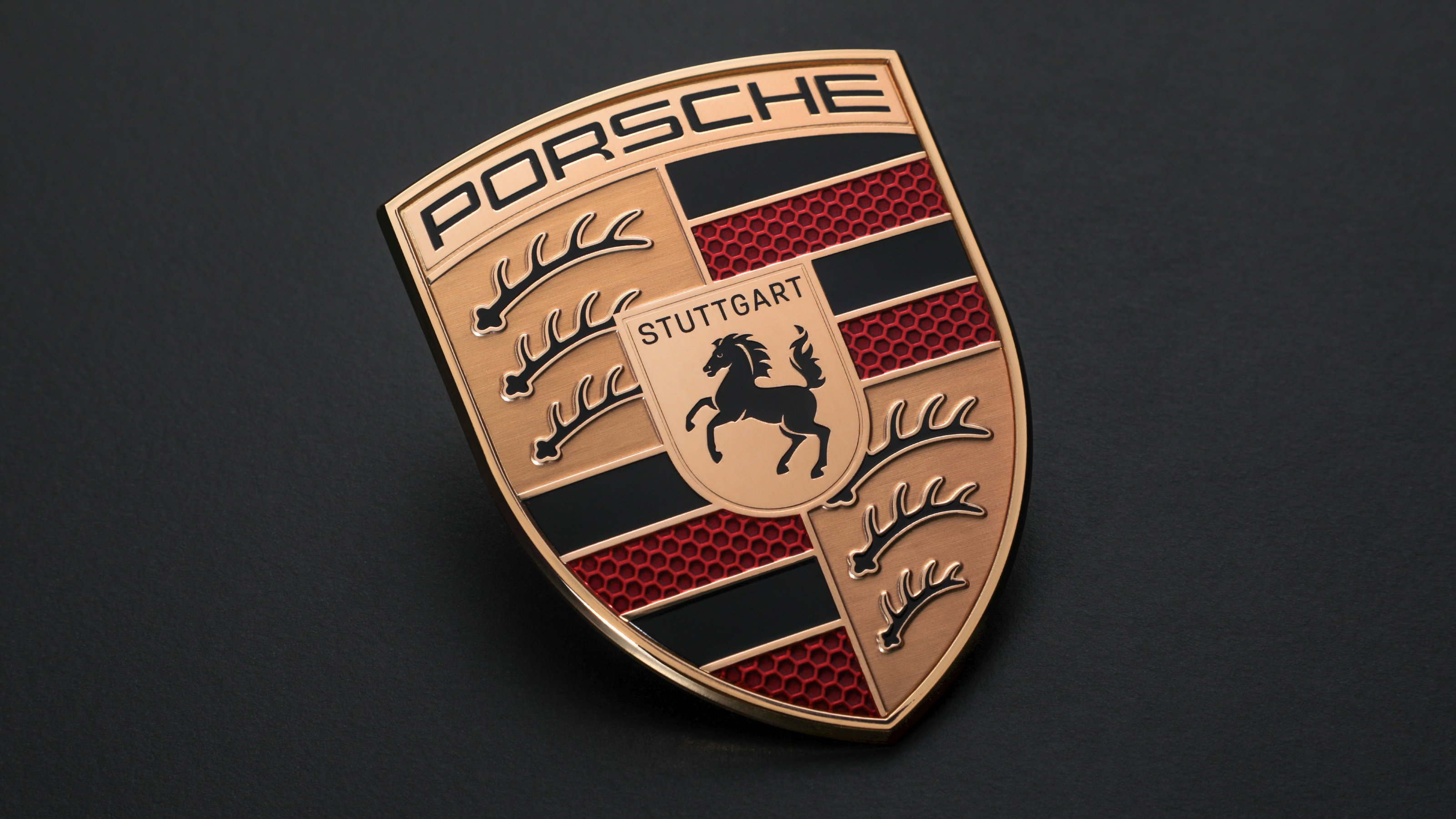
Michael Mauer, vice president of style at Porsche, has overseen the creation of a new Porsche badge, the latest iteration of a longstanding and ever-evolving symbol of sports motoring.
Ferrari isn’t the only company to have a rampant horse on its badge. Although the Italian stallion was originally associated with 1930s racing Alfa Romeo, Enzo Ferrari’s former team, it has been associated with Ferrari’s own cars since the first Ferrari 125 S of 1947.

The new Porsche crest and badge, left, and the design it replaces
The following year, a new sports car maker emerged from the ashes of post-war German industry. Porsche’s badge has more in common with traditional heraldry than its Italian counterpart. The horse comes from the flag of the city of Stuttgart (‘stud garden’, a name which gives away its horse-breeding history). The first badge bore the name of the company and its hometown, with the black and red colouring and deer-antler motif lifted directly from the shield of Württemberg-Hohenzollern, the state founded in 1945 and eventually becoming part of Baden-Württemberg.

The evolution of an iconic badge
This clearly Germanic symbol was partly due to influential car importer Max Hoffman, the man who brought Porsche to the USA. Hoffman wanted the new 356 sports car to better signal its origins, and the crest was drawn up in 1952, four years after the car debuted.
The draughtsman behind the logo was one Franz Xaver Reimspiess, an Austrian engineer responsible for much of the mechanical innovation behind the Volkswagen Beetle. Reimspiess was also rumoured to have designed the Volkswagen logo in 1936.
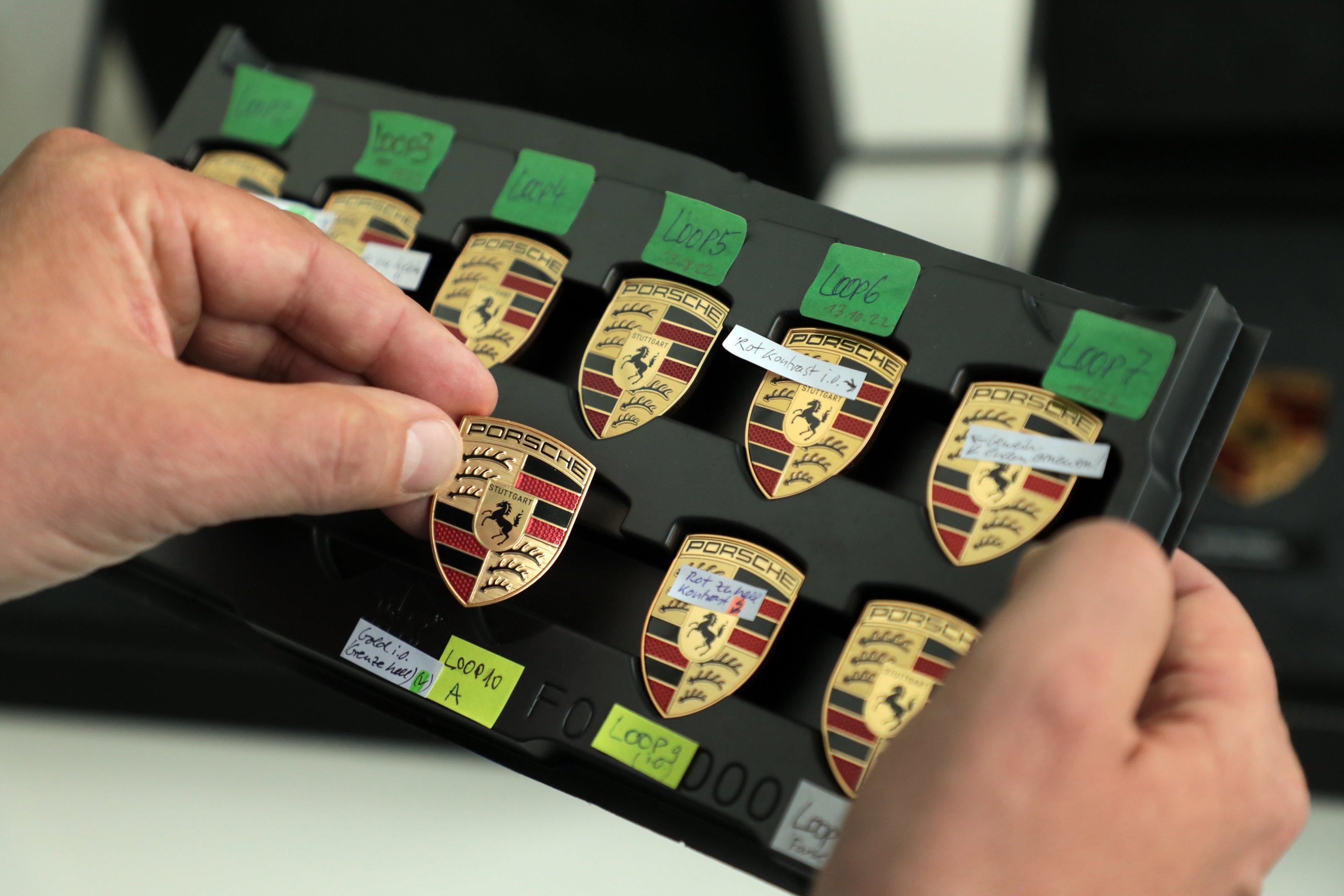
The new crest maintains the form and dimensions of the original but tightens up every element. ‘The “75 years of Porsche sports cars” anniversary was the occasion for us to fundamentally rework this trademark,’ Mauer says, ‘We reinterpreted historical characteristics and combined them with innovative design elements such as a honeycomb structure and brushed metal.’
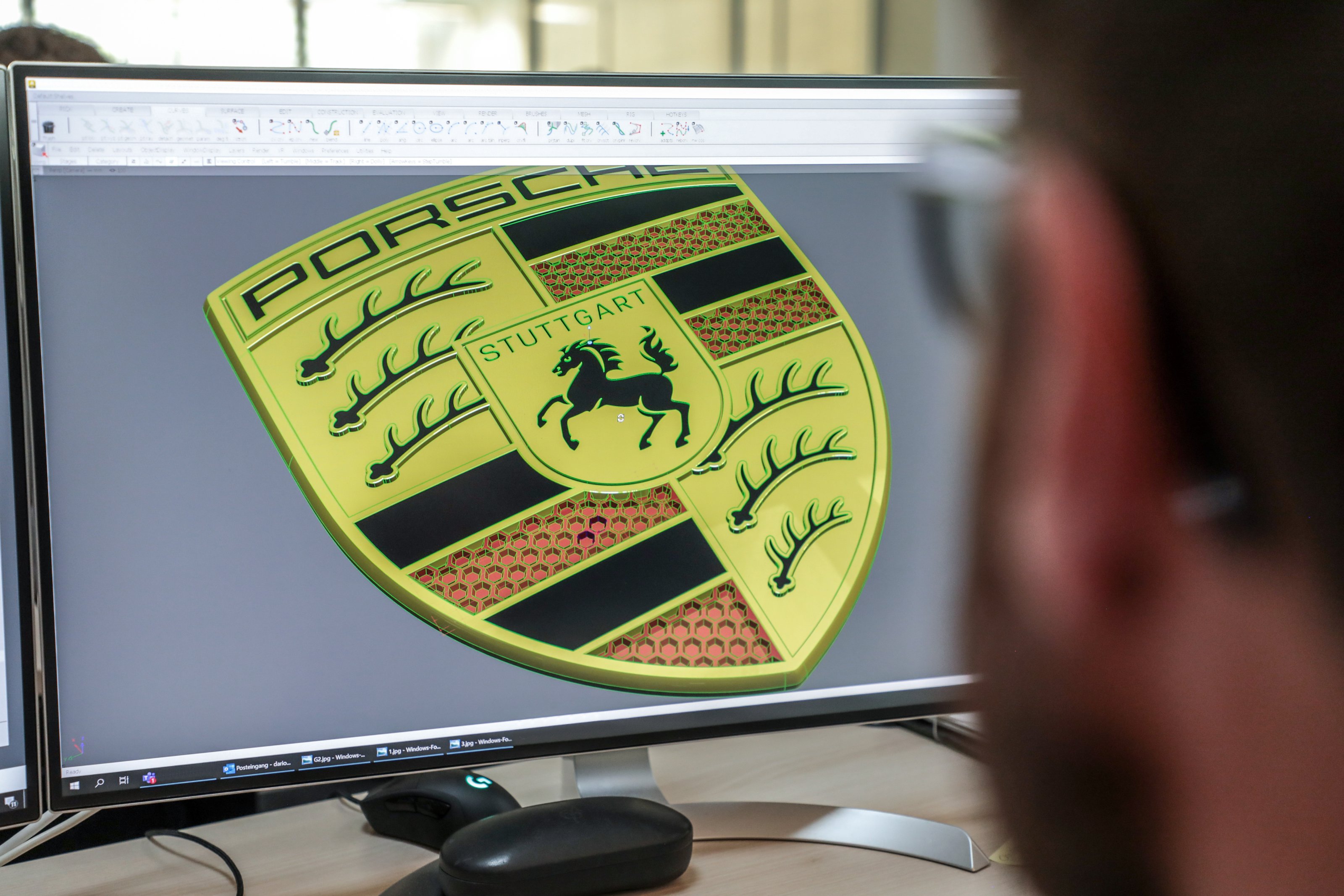
Shaping the new badge
It's taken three years to shape this badge, both as a three-dimensional physical object to adorn the cars and as a 2D logotype that’ll been seen around the world both digitally and in printed matter. The process was overseen by Joachim Paetzel, specialist for colour and trim at the brand.
Wallpaper* Newsletter
Receive our daily digest of inspiration, escapism and design stories from around the world direct to your inbox.
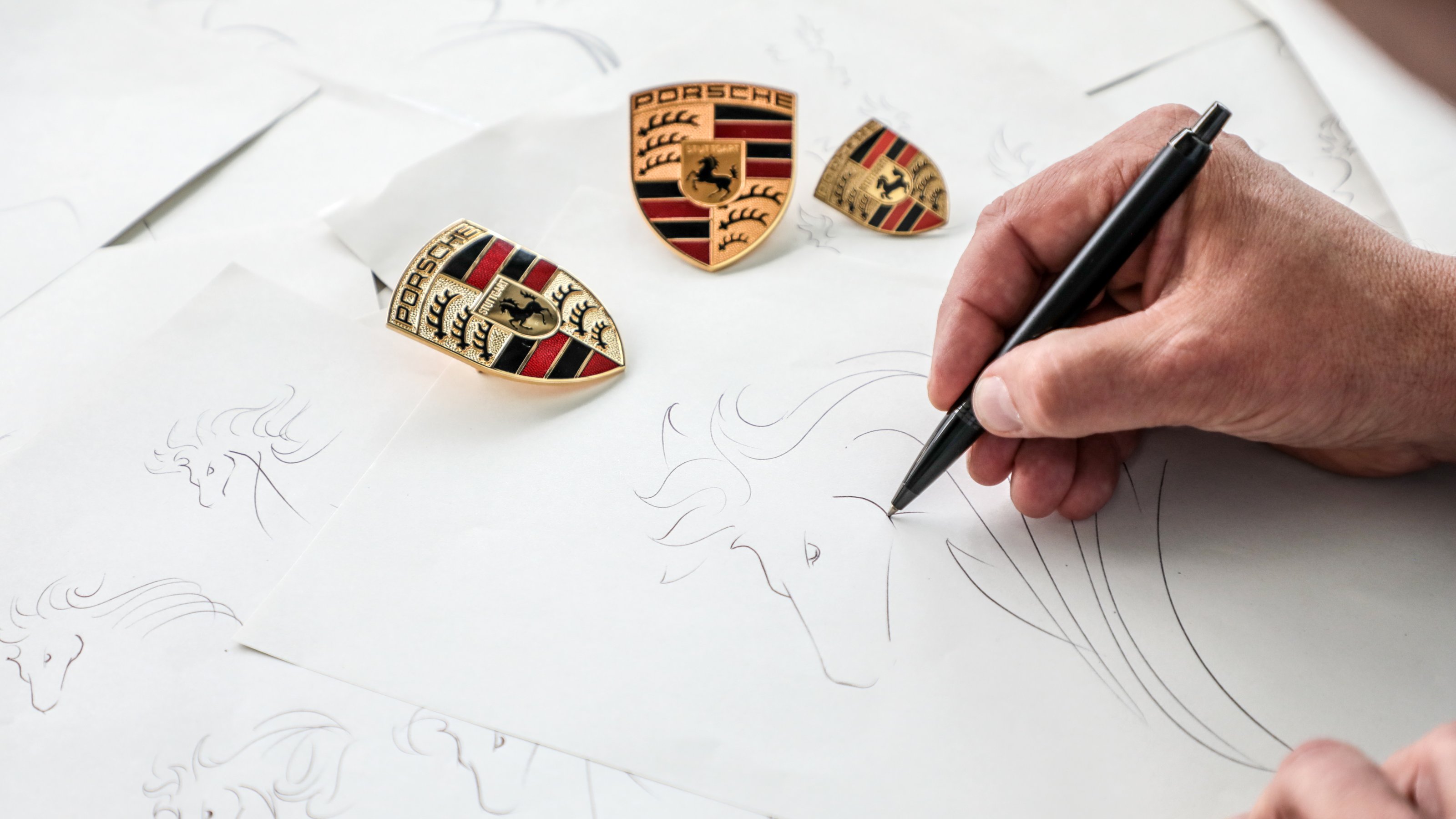
The iconic horse motif has been completely redrafted
Every facet is different, included a softer coloured gold, a finely tapered bevel around the edge, the application of clear brushed metal surfaces behind the antlers and a new 3D honeycomb pattern for the red stripes. The word ‘Stuttgart’ now uses Porsche’s own typeface and the horse itself has been redrawn to be bolder and less stylised.
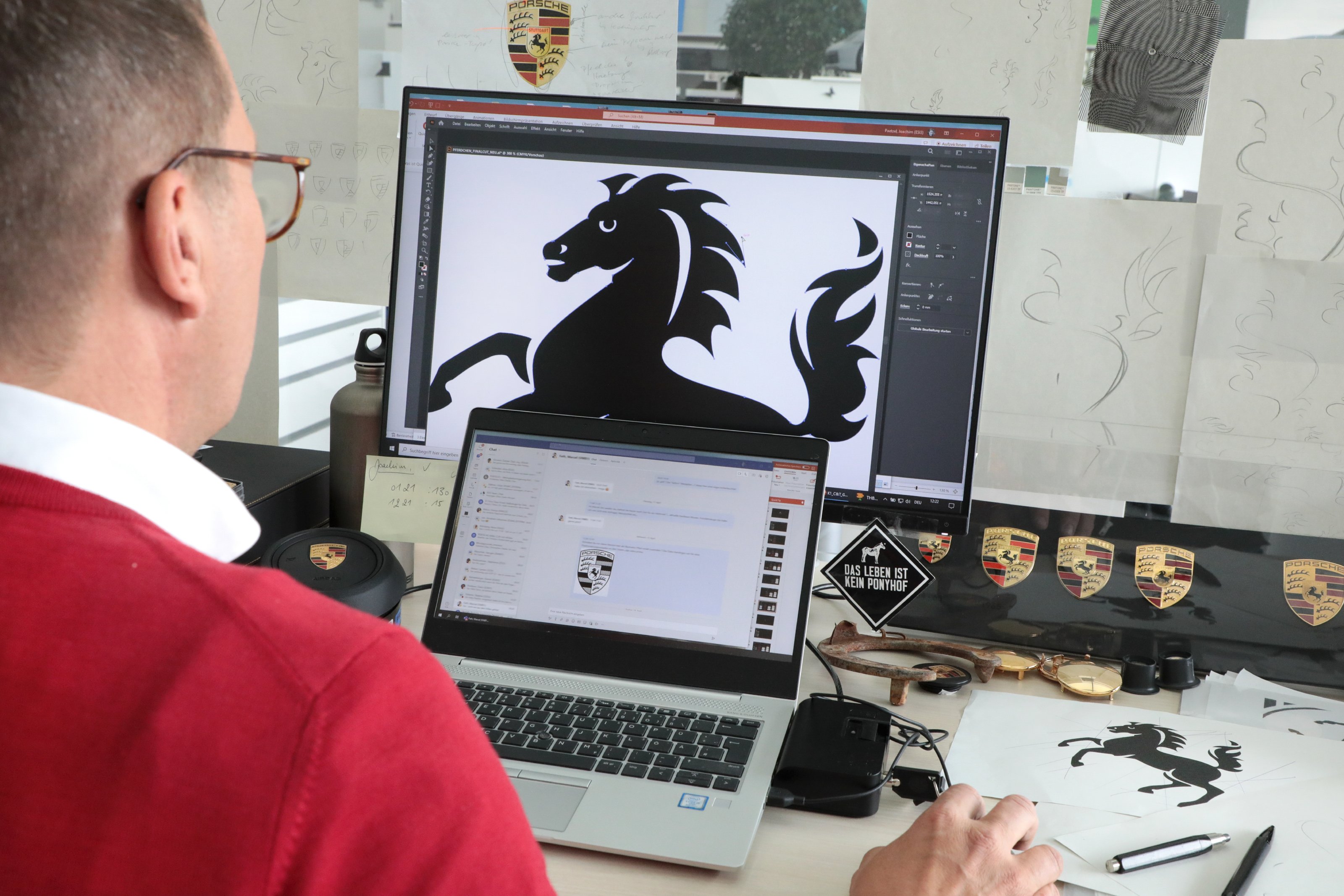
The original crest was given a refresh in 1954, then again in 1963, 1973, 1994, 2008 and finally in 2014. This new badge will make its debut on the new Porsche Panamera, due at the end of 2023. The company keeps historic badges in production, however, as the Porsche Classic restoration service needs to have access to every conceivable part. With 75 years of heritage to preserve, plus high hopes of at least another 75 to come, brand identities are precious enough to need continuous care.
Jonathan Bell has written for Wallpaper* magazine since 1999, covering everything from architecture and transport design to books, tech and graphic design. He is now the magazine’s Transport and Technology Editor. Jonathan has written and edited 15 books, including Concept Car Design, 21st Century House, and The New Modern House. He is also the host of Wallpaper’s first podcast.
-
 Put these emerging artists on your radar
Put these emerging artists on your radarThis crop of six new talents is poised to shake up the art world. Get to know them now
By Tianna Williams
-
 Dining at Pyrá feels like a Mediterranean kiss on both cheeks
Dining at Pyrá feels like a Mediterranean kiss on both cheeksDesigned by House of Dré, this Lonsdale Road addition dishes up an enticing fusion of Greek and Spanish cooking
By Sofia de la Cruz
-
 Creased, crumpled: S/S 2025 menswear is about clothes that have ‘lived a life’
Creased, crumpled: S/S 2025 menswear is about clothes that have ‘lived a life’The S/S 2025 menswear collections see designers embrace the creased and the crumpled, conjuring a mood of laidback languor that ran through the season – captured here by photographer Steve Harnacke and stylist Nicola Neri for Wallpaper*
By Jack Moss
-
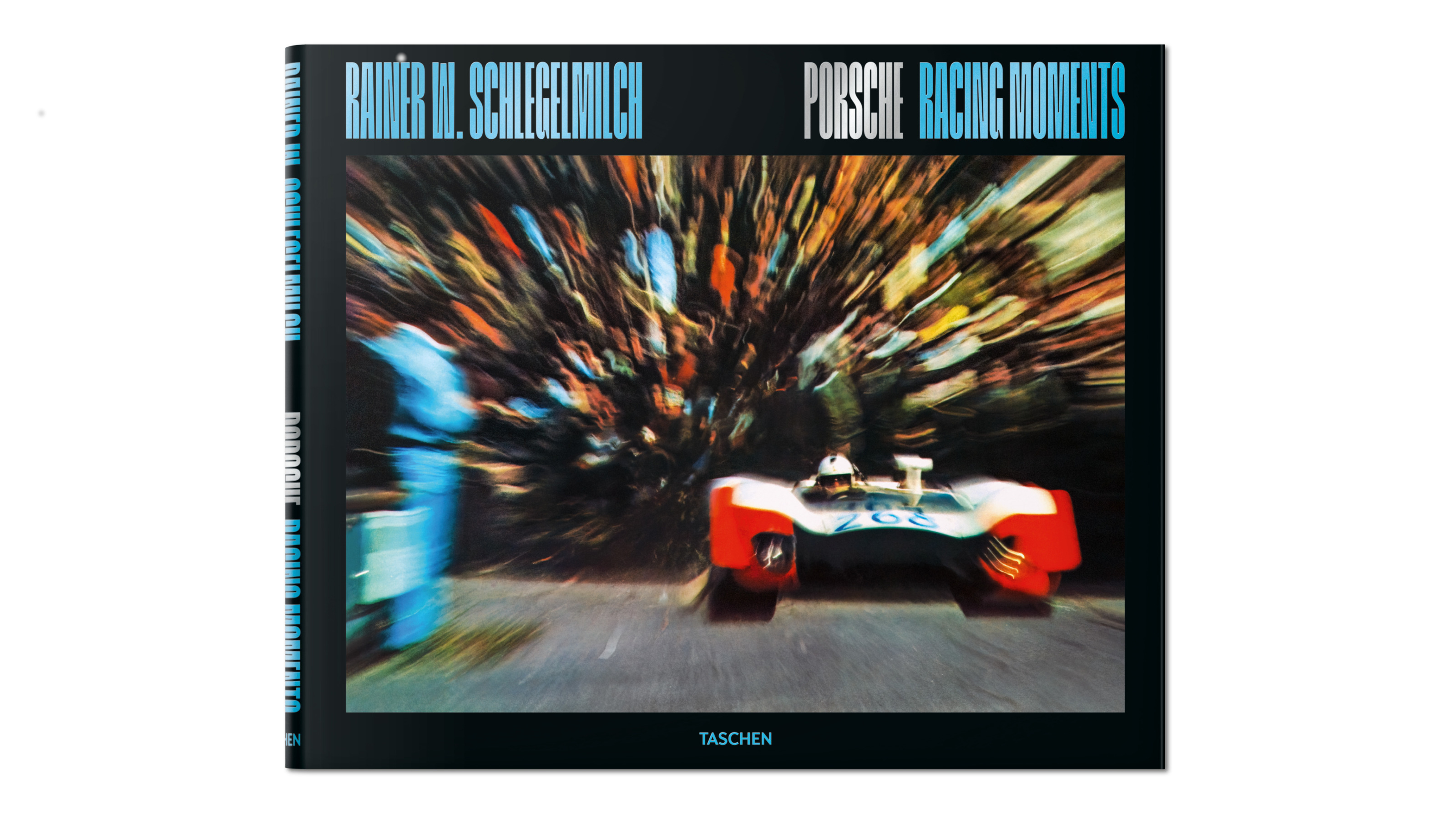 Rainer W. Schlegelmilch's Porsche photography showcases the aesthetics of speed
Rainer W. Schlegelmilch's Porsche photography showcases the aesthetics of speedTaschen's new edition of Rainer W. Schlegelmilch’s collected imagery from a quarter of a century spent following Porsche racing highlights historical machines, emotive camera technique and major moments on the track
By Jonathan Bell
-
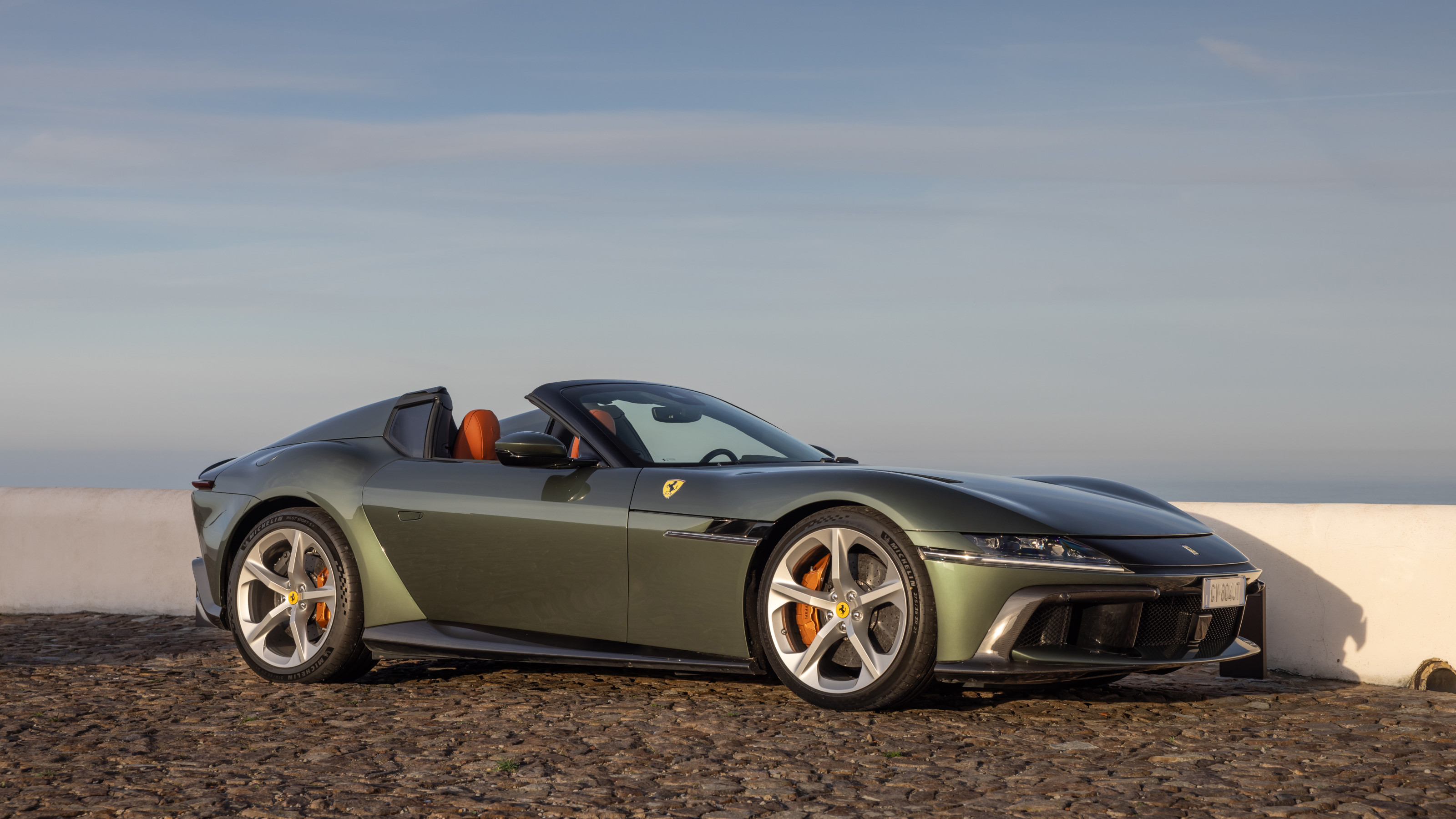 Ferrari drops the top on its mighty 12Cilindri super coupe to create the elegant Spider
Ferrari drops the top on its mighty 12Cilindri super coupe to create the elegant SpiderWe drive the new Ferrari 12Cilindri Spider, a last and glorious hurrah for the sound of the V12
By Jonathan Bell
-
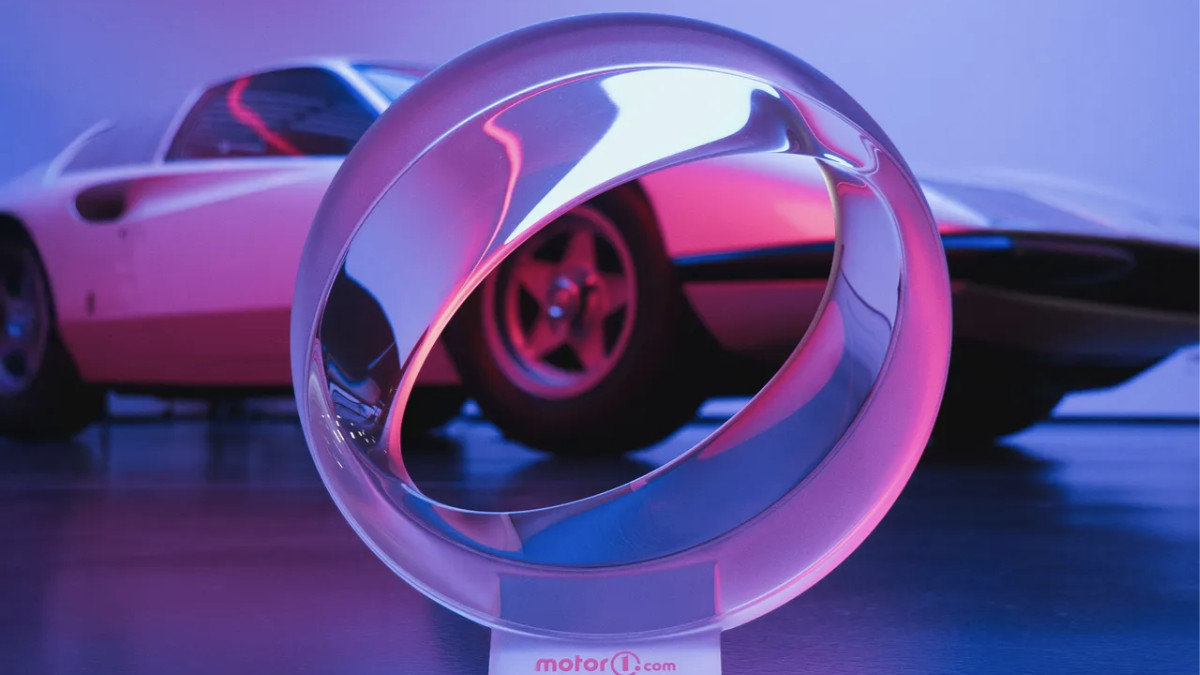 We are the world: Pininfarina’s ‘Orbis’ taps Papal support for an eco-friendly agenda
We are the world: Pininfarina’s ‘Orbis’ taps Papal support for an eco-friendly agendaThe Orbis is a ‘symbolic object’, a gift to Pope Francis from the Italian design agency at a time of political upheaval and social fracture around all aspects of sustainability
By Jonathan Bell
-
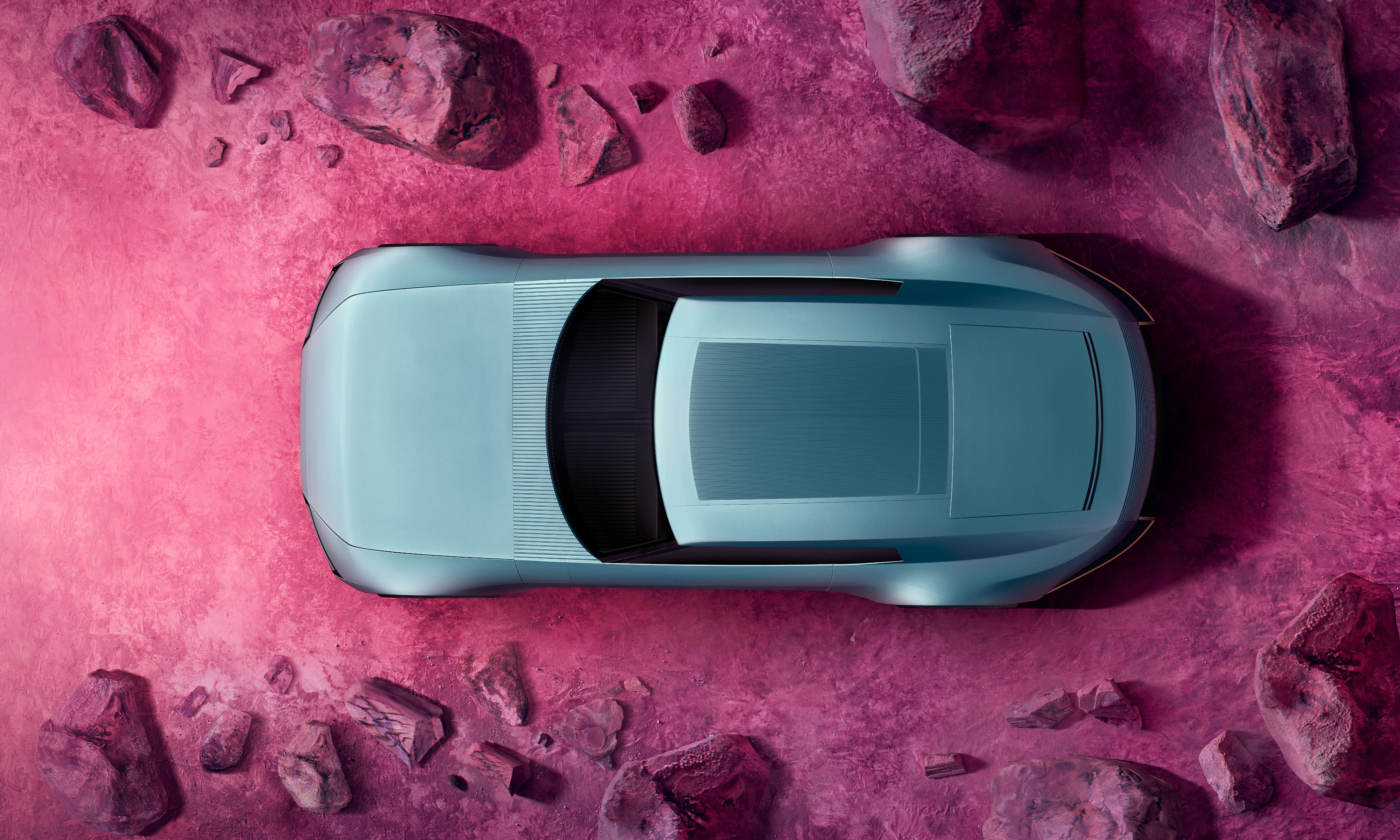 The top 10 concept cars of 2024, as selected by Wallpaper’s Transport Editor
The top 10 concept cars of 2024, as selected by Wallpaper’s Transport EditorWe round up our favourite forays into futuristic design with this collection of concepts and design studies showcasing the transport of tomorrow
By Jonathan Bell
-
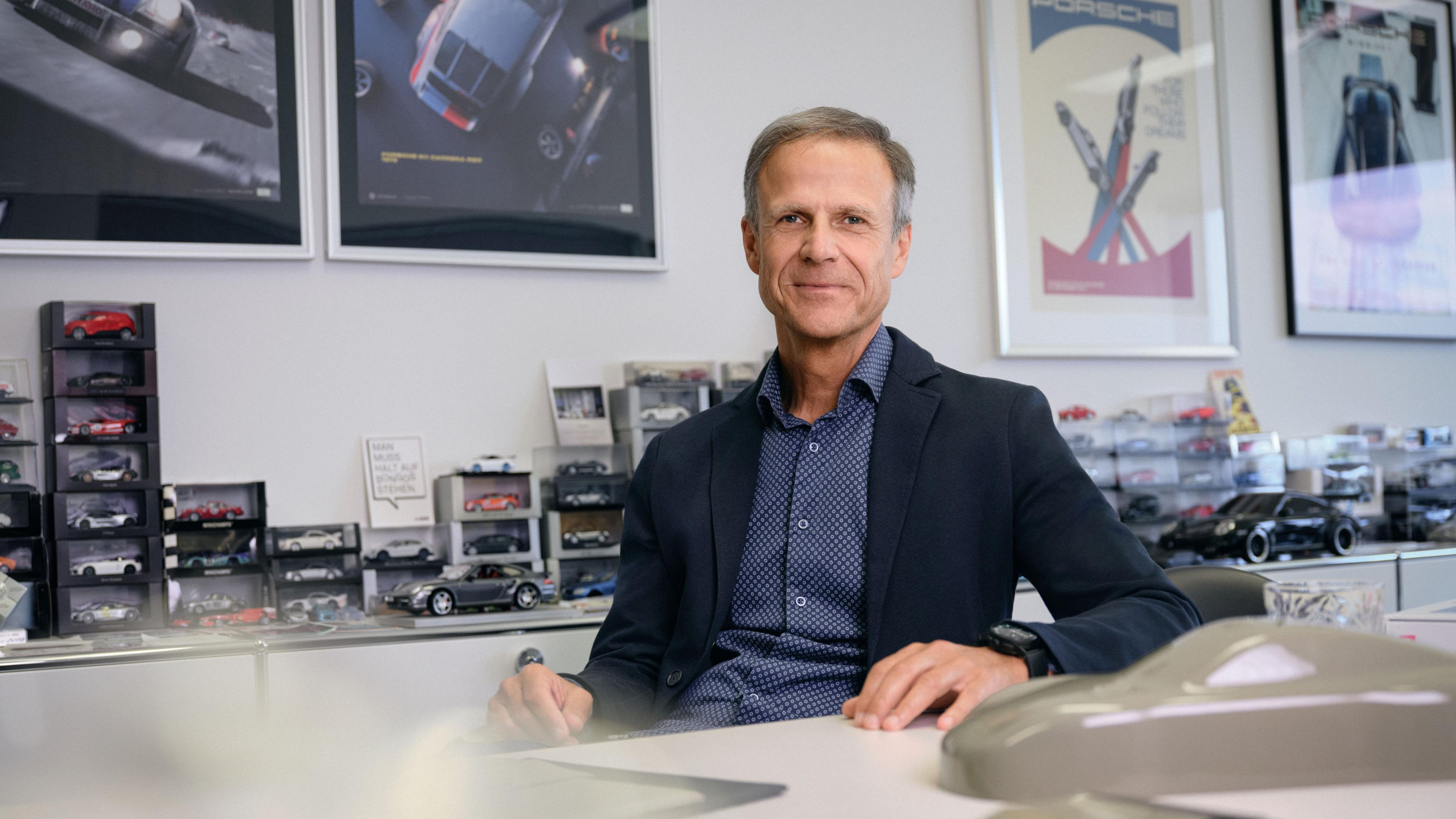 Michael Mauer on two decades at the helm of Porsche’s design
Michael Mauer on two decades at the helm of Porsche’s designPorsche’s signature style has diversified in recent years, thanks to the design leadership of Michael Mauer. We caught up with him to reflect on his 20 years in the hot seat
By Rory FH Smith
-
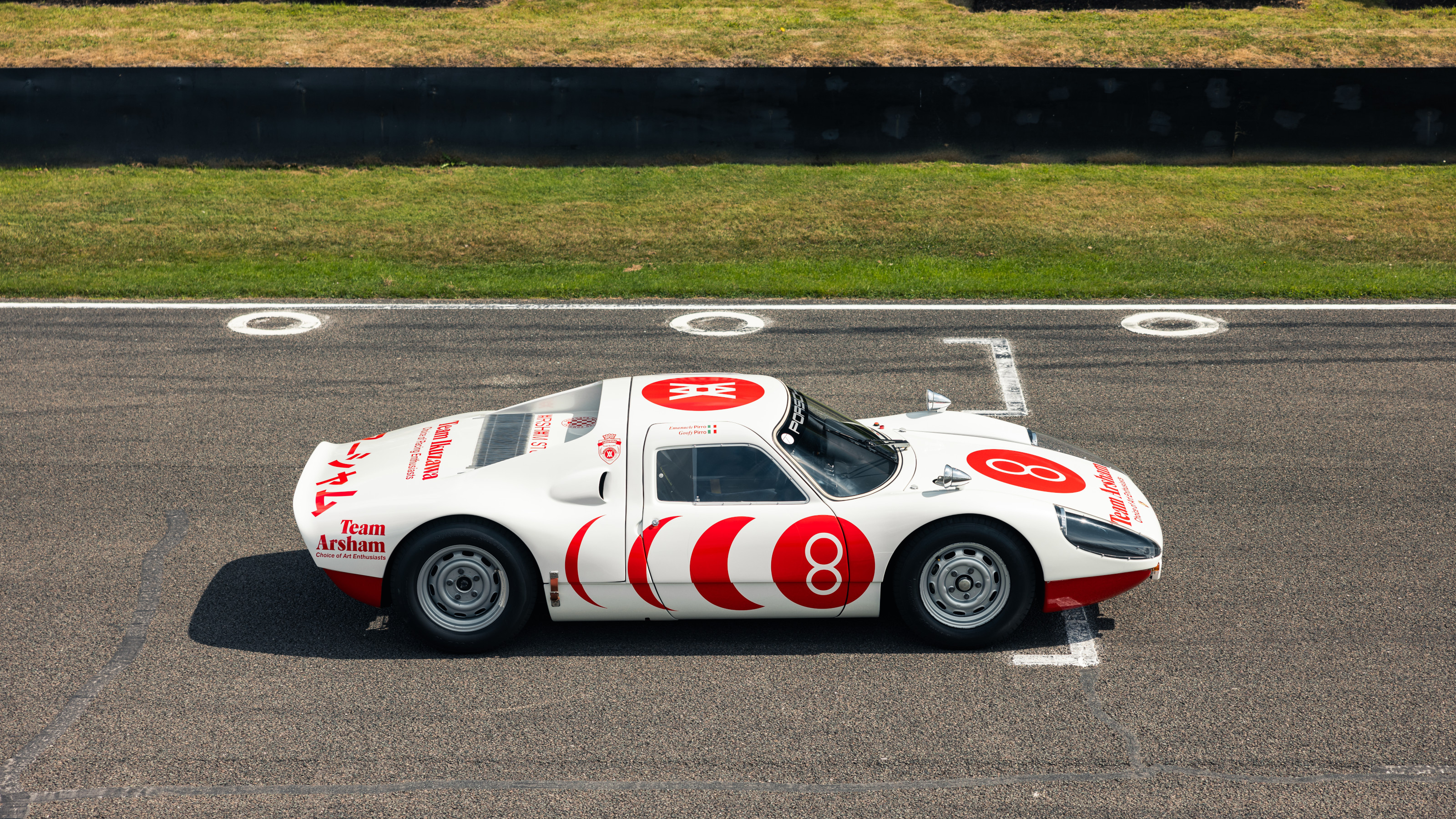 Team Ikuzawa brings the art of Daniel Arsham to motorsport
Team Ikuzawa brings the art of Daniel Arsham to motorsportCreative director Mai Ikuzawa has overseen a new capsule clothing collection, a collaboration with artist Daniel Arsham that also honours her racing driver father Tetsu Ikuzawa
By Josh Sims
-
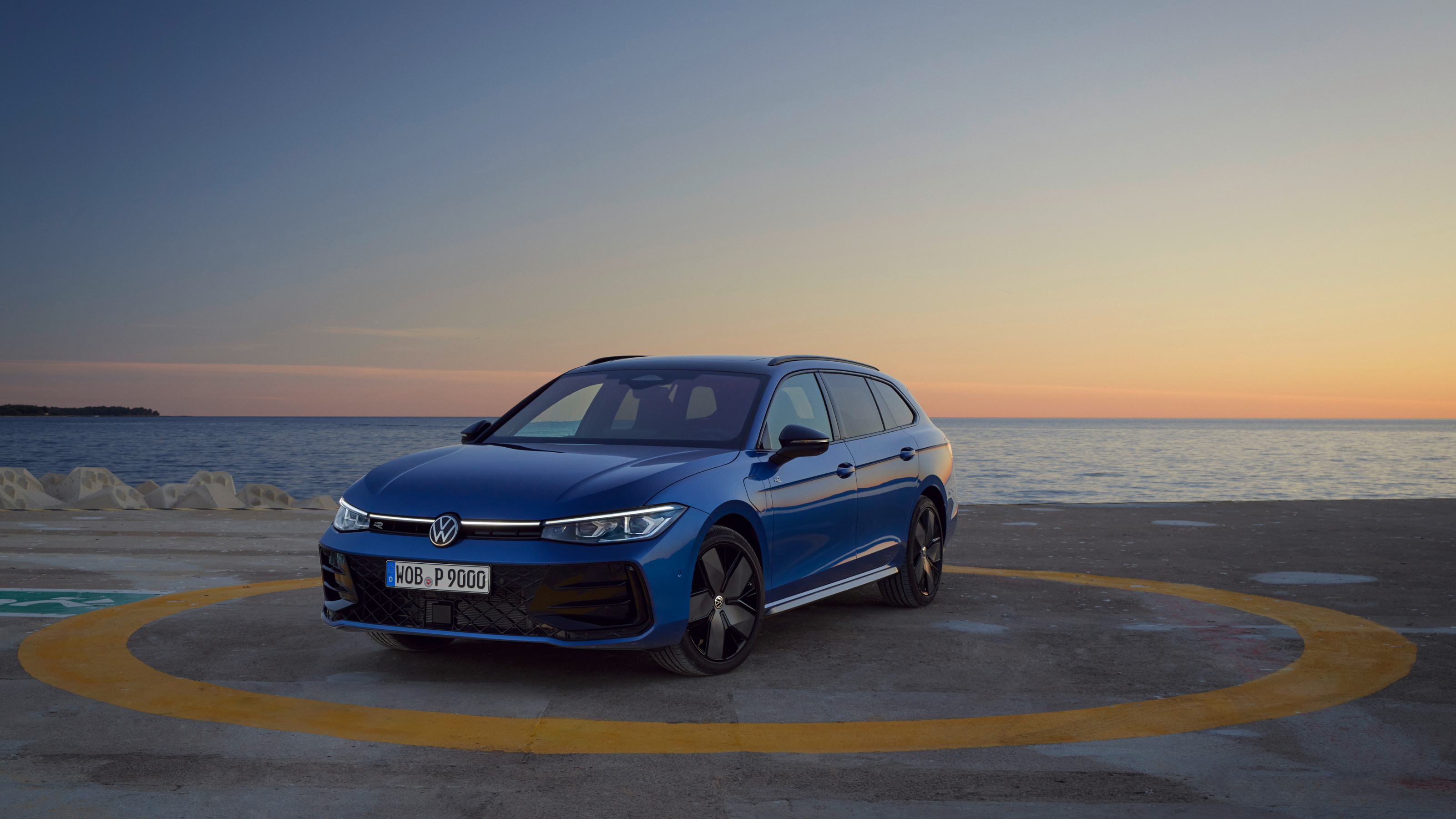 The Volkswagen Passat is a sober, straight edged estate car that feels increasingly out of time
The Volkswagen Passat is a sober, straight edged estate car that feels increasingly out of timeWhy would anyone pass on a Passat? Volkswagen’s big load lugger proves that the old ideas are still the best
By Jonathan Bell
-
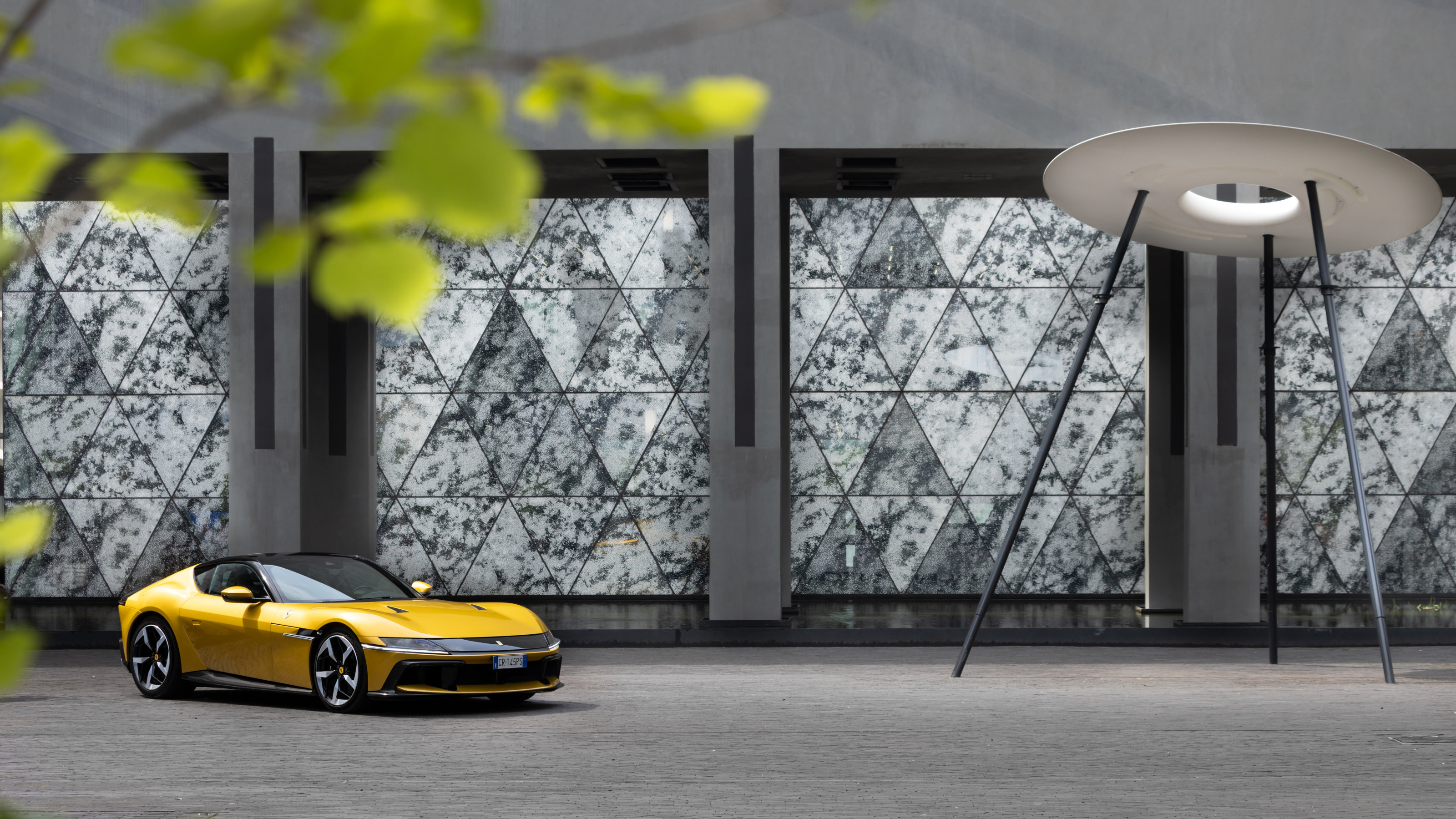 The Ferrari 12Cilindri is the ultimate expression of the marque’s greatest engine
The Ferrari 12Cilindri is the ultimate expression of the marque’s greatest engineWe sample Ferrari's latest, the mighty front-engined grand tourer that bears a simple descriptive name, 12Cilindri
By Rory FH Smith